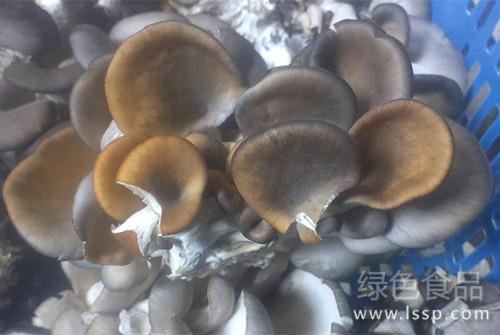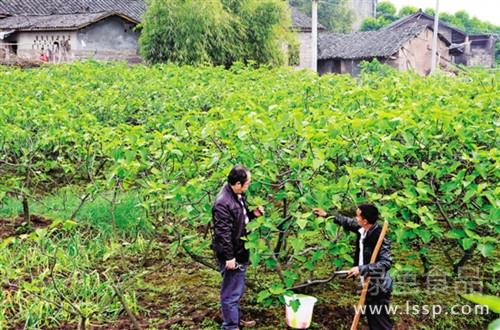Prevention and treatment of Pleurotus ostreatus yellow mushroom disease with sticky and fragile Pleurotus ostreatus

Pleurotus ostreatus yellow mushroom disease
1. Symptoms. Pleurotus ostreatus yellow mushroom disease often occurs from the young mushroom lid or the connection between the young mushroom stalk and the mushroom lid. after the disease, the young mushroom lid or the concave part of the young mushroom lid appears light macula, the young mushroom body is sticky, stops growing and dies, the mushroom body grows slowly, loses elasticity, it will break at the slightest touch, and then the mushroom body will stick and atrophy, emit rotten smell, and the disease will spread rapidly, causing the cultivated material surface to become sticky and stop producing mushrooms.
2. The cause of the disease. The pathogen of Pleurotus ostreatus disease is Pseudomonas aeruginosa. Under the conditions of high temperature, high humidity and poor ventilation, the ① is beneficial to the occurrence and growth of the bacteria on the substrate rich in organic matter. The ② cultivation ground is old, the environment is deteriorating, and the disinfection is not complete. ③ shed waste culture materials, residual mushrooms and mushroom stalks all over the floor, dirty and messy so that the bacteria have a place to live and multiply. At present, the cultivation of Pleurotus ostreatus in ④ is mainly based on raw material or fermented material, which carries bacteria and causes the disease. ⑤ carries bacteria in water or soil-covered materials. The poor disease resistance or poor quality of ⑥ strain and poor management led to the slender mycelium, decreased resistance and finally infected the pathogen.
3. Preventive measures.
① selected strains with strong disease resistance according to local conditions, such as Heipingwang, Huipingkang No. 2, P89 and so on, which were not easy or mild. The same strain should not be planted in the same site year after year, and the variety should be changed once every 2 to 3 years.
② selected age-appropriate bacteria with no miscellaneous bacteria pollution, thick white hyphae and sturdy hyphae.
③ uses raw and auxiliary materials that are mildew-free, insect-free, pollution-free and of high quality. The cultivation materials should be exposed to the sun before use, and fungicides such as carbendazim or carbendazim with a dry weight of 0.1% should be added.
The old ④ site should not be used year after year. If used, it should be disinfected one month before the cultivation bag enters the shed. Carbendazim, bleach, agricultural streptomycin and Wanxiaoling can be used to kill bacteria, dichlorvos and cypermethrin 1000 times, spray the floor, walls and outside environment of the shed, once a week. Two or three days before the cultivation bag was put into the shed, it was fumigated with sulfur for 24 hours.
⑤ should strengthen the management of bacterial period and improve the disease resistance of mycelium. During the mushroom production period, the temperature and humidity in the greenhouse should be controlled well, and the temperature is too high, which is not conducive to the growth of wide-temperature or low-temperature strains, but provides a suitable environment for the growth of various miscellaneous bacteria and bacteria; large humidity in the shed is beneficial to Pleurotus ostreatus and to all kinds of miscellaneous bacteria.
⑥ builds a mushroom shed in a place with good ventilation and convenient drainage, and the ventilation in the shed should be smooth. It is appropriate to set up ventilation vents so that every material surface can have flowing air passing through. There is no ventilation dead corner, and the ventilation time should be adjusted in time according to air temperature, weather, wind speed and other factors.
When ⑦ is cultivated with soil mulching, the soil covering materials should be disinfected.
⑧ should do a good job in the sanitation in the shed. After Pleurotus ostreatus is harvested, remove the residual mushrooms in time, keep the ground clean, and sprinkle lime powder regularly for disinfection.
- Prev

Neglect of management quality and yield drop topdressing techniques for fig trees
Neglect of management quality and yield drop topdressing techniques for fig trees
- Next

Reproduction of yellow cicada orchid
The division of plants is generally carried out every three years, and can be carried out in both spring and autumn. The ramet generally chooses the yellow cicada orchid with strong growth and dense pseudobulm. After the ramet, more than 5 pseudocorms should be preserved and connected together. Before dividing plants, the irrigation times of yellow cicada orchid should be reduced to make the basin soil dry.
Related
- Fuxing push coffee new agricultural production and marketing class: lack of small-scale processing plants
- Jujube rice field leisure farm deep ploughing Yilan for five years to create a space for organic food and play
- Nongyu Farm-A trial of organic papaya for brave women with advanced technology
- Four points for attention in the prevention and control of diseases and insect pests of edible fungi
- How to add nutrient solution to Edible Fungi
- Is there any good way to control edible fungus mites?
- Open Inoculation Technology of Edible Fungi
- Is there any clever way to use fertilizer for edible fungus in winter?
- What agents are used to kill the pathogens of edible fungi in the mushroom shed?
- Rapid drying of Edible Fungi

